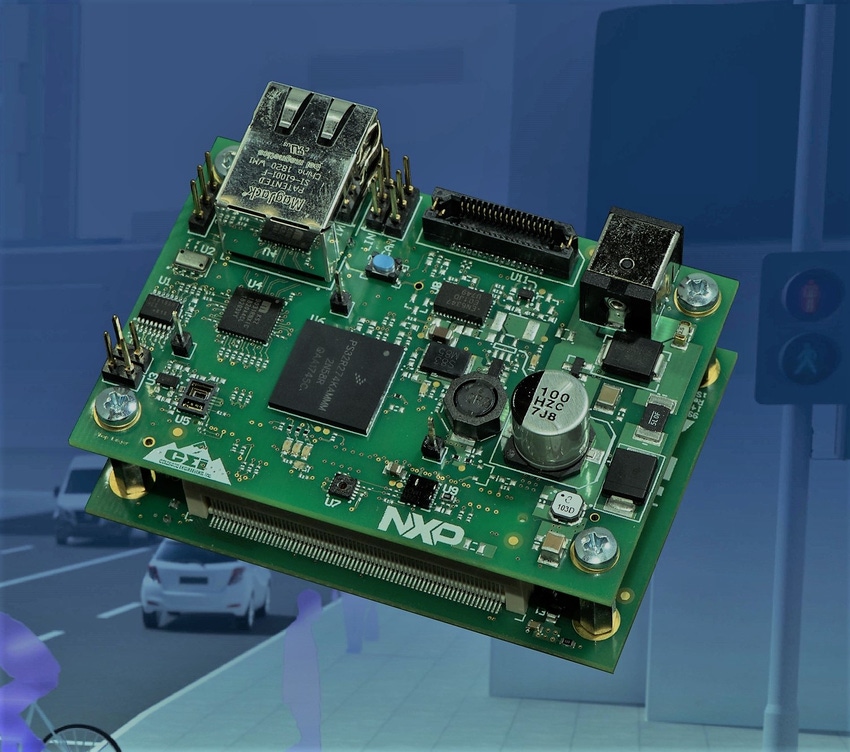New reference platform meets anticipated increase in radar use in ADAS and autonomous vehicles.
October 8, 2018

A new reference platform promises to speed the development time of automotive radar devices for adaptive cruise control, automated braking, and automated steering.
NXP Semiconductors N.V., maker of the new platform, says that it provides engineers with a more direct path to production than any previous product. “They can kickstart their development activities and accelerate the time it takes to develop a product that can be deployed into production vehicles,” Colin Cureton, senior director of product management for ADAS at NXP Semiconductors, told Design News.
|
The RDK-S32R274 radar reference platform provides a more direct path to production. (Image source: NXP Semiconductors) |
Known as the RDK-S32R274, the new radar reference platform was developed in conjunction with electronics supplier Colorado Engineering. It includes an NXP S32R27 microcontroller, a TEF810X 77-GHz transceiver, FS8410 power management IC, and Ethernet and CAN controllers along with a software development kit and tools.
NXP is timing the product rollout for a huge anticipated increase in the use of automotive radar systems. Today, radar is employed in automated braking systems that detect pedestrians and cyclists in front of and behind vehicles, as well as in automated emergency steering, cross-traffic detection, and child detection. In the near future, many vehicles are expected to deploy radar on the front and rear, as well as on all four corners. NXP predicts that overall use of automotive radar will jump from 24 million units shipped worldwide in 2016 to 168 million units in 2025—a seven-fold increase.
NXP expects to sell the $3,500 platform to Tier One and Tier Two suppliers, as well as to startups that may need help bringing automotive radar to market. “Radar systems are incredibly complex,” Cureton said. “To develop them, you’ve got to have microprocessor experience, RF experience, and antenna experience. You also have to be able to develop highly complicated math algorithms for radar processing, and you have to deal with functional safety and security requirements. If you’re a startup trying to get into this space, you don’t necessarily have all that expertise.”
Radar development platforms were available in the past, but typically were not intended as a direct path to production, Cureton said. Most required substantial engineering effort, including re-work of analog and digital hardware and re-development of software code for automotive-grade quality assurance.
RELATED ARTICLES:
With the new development platform, NXP wants to change that. “We’ve provided a software development kit where the libraries are pre-optimized for the hardware,” Cureton said. “The quality of the software is a step up from the reference code examples that have been provided in the past.”
Senior technical editor Chuck Murray has been writing about technology for 34 years. He joined Design News in 1987, and has covered electronics, automation, fluid power, and auto.
|
About the Author(s)
You May Also Like





